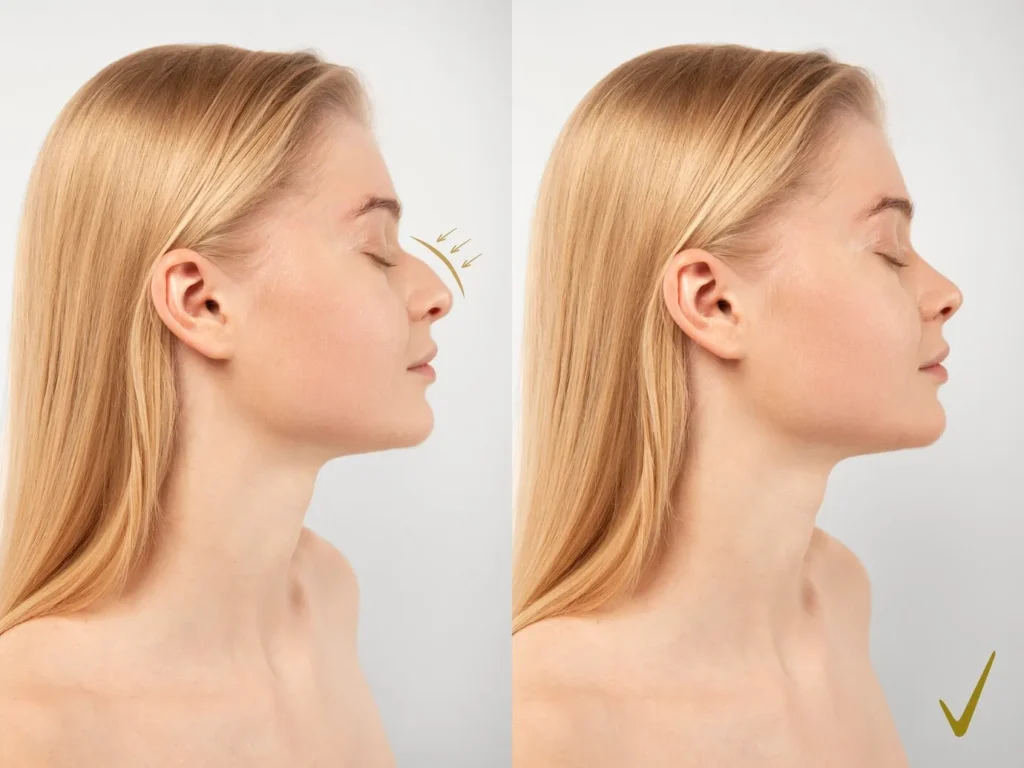


Eternity Hospital, led by Dr Arvind Jain, provides advanced hair transplant solutions to help patients regain fuller, natural-looking hair. Hair loss can occur due to genetics, hormonal changes, aging, stress, poor diet, and environmental factors. Thinning hair and baldness can significantly impact confidence and self-image.
At Eternity Hospital, we understand that each patient has unique hair restoration needs. That’s why we offer a range of surgical and non-surgical treatments designed to restore hair density and improve overall scalp health. Our facility has state-of-the-art technology and innovative techniques to ensure safe, effective, and long-lasting results. Whether you require a full hair transplant or a non-invasive approach to hair regrowth, our expert team delivers natural outcomes that enhance appearance and self-confidence.
Rhinoplasty at Enternity Hospital is designed to improve not only the visual appeal of the nose but also its functionality. We specialize in addressing a variety of concerns, including a crooked nose, nasal asymmetry, and breathing difficulties caused by structural abnormalities, such as a deviated septum. Our surgeons use the latest techniques and state-of-the-art technology to ensure precise, safe, and effective results.


Our team, led by Dr. Arvind Jain, specializes in cutting-edge hair restoration treatments, ensuring high-quality care and optimal results.

We use the latest medical advancements to provide safe, effective, and minimally invasive procedures tailored to individual needs.

Each patient receives a personalized approach to address their hair loss concerns and goals, ensuring natural-looking and satisfying outcomes.

We prioritize patient comfort, offering minimally invasive solutions with little to no downtime, allowing for a quick recovery and seamless experience.

Our goal is to provide lasting solutions by addressing the root causes of hair loss while helping patients maintain their results with ongoing care and maintenance.

Our hospital is equipped with modern facilities, maintaining the highest standards of safety, hygiene, and patient comfort.

With access to
Get in Touch – For appointments and inquiries, call us or visit our hospital.
We’re here 24/7 to assist you with the best medical care.
Compassionate care and expert treatment that made me feel safe and supported every step of the way.
Doctor Rashmi Jain is like goddess for us. she worked tirelessly with us. day or night or even festivals, sometimes even in the late night 2 am.during pregnancy she was there whole night as the delivery was pre-term. I owe a big big thank you doctor for everything.

You can schedule an appointment via phone, our website, or by visiting our hospital reception.
Individuals experiencing significant hair loss with healthy donor areas are ideal candidates for a transplant.
Hair transplant results are permanent, as the transplanted hair is resistant to hair loss.
Local anesthesia is used, minimizing discomfort during the procedure. Mild soreness may occur during recovery.
FUE and DHI patients typically recover within a week, while FUT patients may require 2 to 3 weeks.
Yes, advanced techniques ensure natural-looking results that blend seamlessly with existing hair.
PRP, laser, and SMP improve hair density and scalp health.
Yes, maintaining a healthy diet, managing stress, and following proper hair care routines can enhance and prolong results.
Absolutely! Hair restoration treatments are suitable for both men and women experiencing hair loss.
Eternity Hospitalis one of the most creative of surgical specialities. It is an art practiced by most skilful of surgeons. As matter of fact the word ‘ plastic’ in plastic surgery has been derived from Ancient Greek word Plastikos’ which means to mould’ !. It constitutes an art of transformation by invisibly shaping your features and flaws to match the true vision of your beautiful self. With its two sub divisions , Aesthetic & reconstructive .